
Diagramming software is a specialized type of tool for mapping out processes, relationships and other types of structured visual information. These diagrams consist of common shapes (ovals, rectangles and diamonds, for example) containing words that are connected by lines, which depict their relationships.
In addition to process maps, diagramming software can be used to create many types of visual representations of information, ideas and knowledge – including mind maps, concept maps, organizational charts and four quadrant diagrams. Many of these programs also enable their users to create a surprising variety of less common diagrams, including office layouts, auto accident reconstructions and IT network diagrams. If it’s structured information, chances are very good that diagramming software can depict it.
One of the things that makes programming software even more powerful today is that each individual topic or node can contain ancillary information, including links, notes and structured data.
One of the latest developments in diagramming software is the ability to create custom tables to store information and then perform rules based operations on them. Developers that have moved in this direction include Lucidchart and Creately.
This capability enables business users to track and manipulate data that would otherwise need to be stored within a spreadsheet or relational database.
Diagramming software tools
According to the 2022 Roadmap of Visual Thinking Tools, there are 21 diagramming applications available today. Here’s a brief overview of several of the most interesting of them:
Creately: Creately, a web-based diagramming tool, recently unveiled a significant update that changes the game for this genre of visual productivity applications. It now incorporates a database into its workspaces, views and diagrams. This flexible capability takes it well beyond its traditional realm of brainstorming and planning to manage entire business workflows.
The new Creately adds the power of a database to its simple, free-form whiteboard interface. This enables you to add fields and properties to any topic in your diagrams, as well as notes and links. This data exists apart from the objects themselves, which means it can be re-used and filtered for use in multiple views and contexts.
SmartDraw: This tool is one of the OG’s of the diagramming tool space, along with Microsoft Visio. It pioneered the idea of adding numerous templates for visual thinking tasks that go well beyond business process mapping. From the beginning, ease of use has been baked into its design, because it was exclusively sold online from its beginning in 1994.
Most recently, SmartDraw launched SmartDraw Online and a new API, which enables it to work with lading collaboration tools like Slack, Confluence and Microsoft Teams.It can also automatically create AWS maps like the one below.
Lucidchart: This innovative web-based tool debuted in 2008, and immediately impressed me with its robust toolset and ease of use. During the last 14 years, it has evolved into one of the leading tools in this space by providing extensive integrations and functionality that enables even a newbie to quickly create professional-looking, well-formatted diagrams.
ConceptDraw DIAGRAM: This tool provides a complete range of business graphic documentation solutions with thousands of stencils and hundreds of templates for rapid diagramming. It began life as a drawing program. That means it provides a comprehensive set of drawing tools to help you visualize your ideas. ConceptDraw DIAGRAM now supports live data, making it easy to create interactive dashboards that display your business’ KPIs in the form of easy-to-understand charts and indicators.
Rather than cluttering the program with endless templates and stencils, developer CS Odessa offers a library of hundreds of them on the ConceptDraw Solutions website. This enables you to easily customize ConceptDraw DIAGRAM to meet your needs.
Conclusion
There are a wealth of diagramming software tools to choose from. These four are only the tip of the iceberg. My advice to you: Determine what types of diagrams you want to be able to produce and let that drive your software selection process. Also, if you’re totally new to diagramming software, I recommend that you start with a web-based tool like SmartDraw Online or Lucidchart to assess if this type of tool meets your needs.
Diagramming tools are one of 21 categories of visual thinking tools included in the Visual Thinking Tools Roadmap.

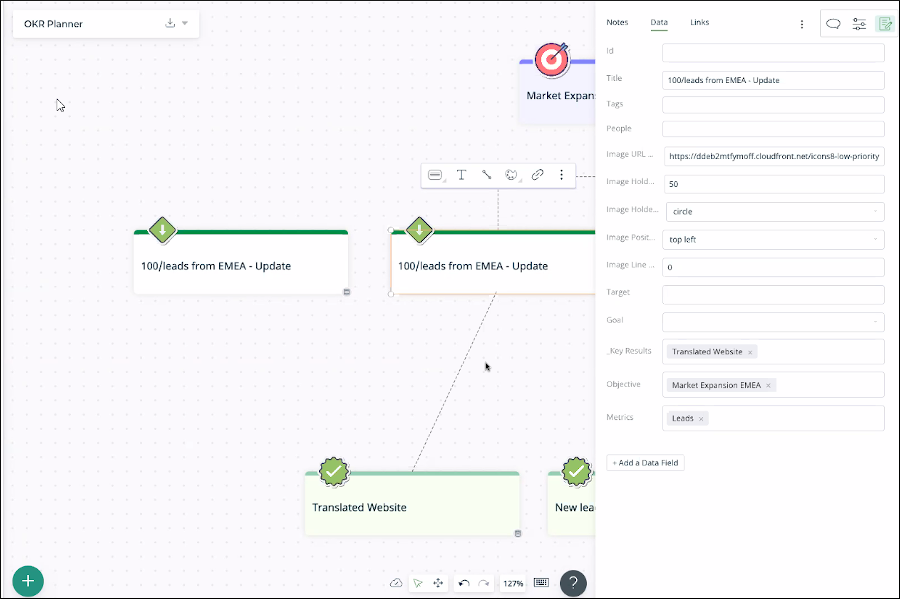
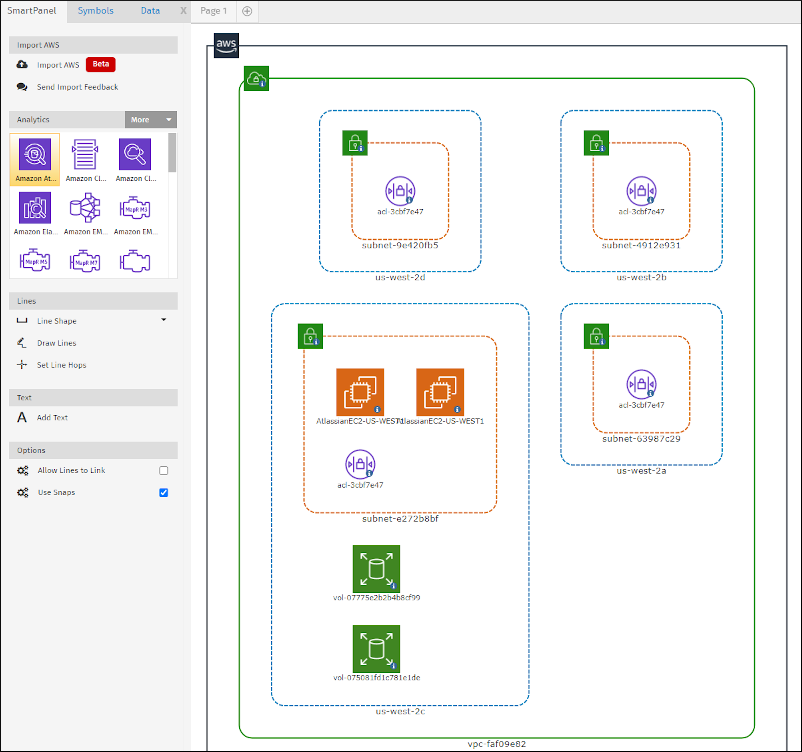
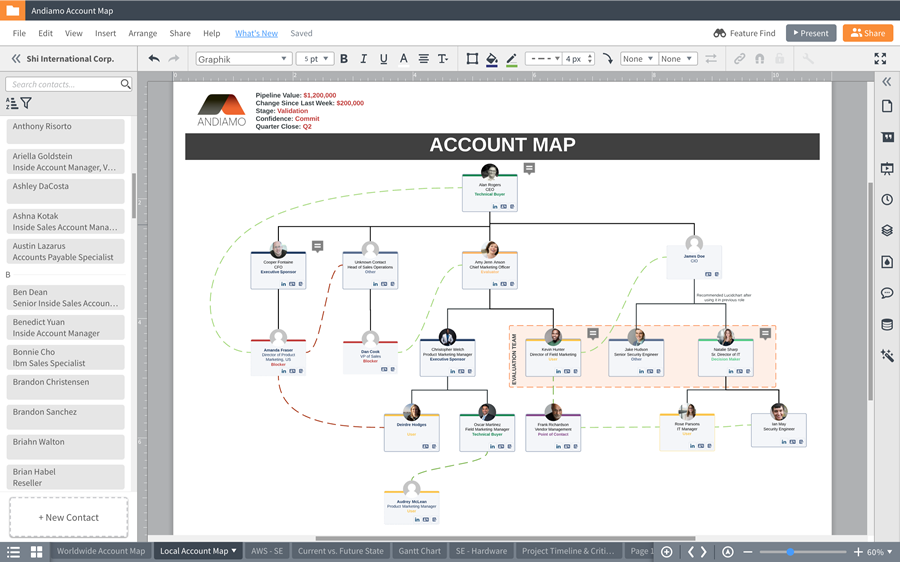
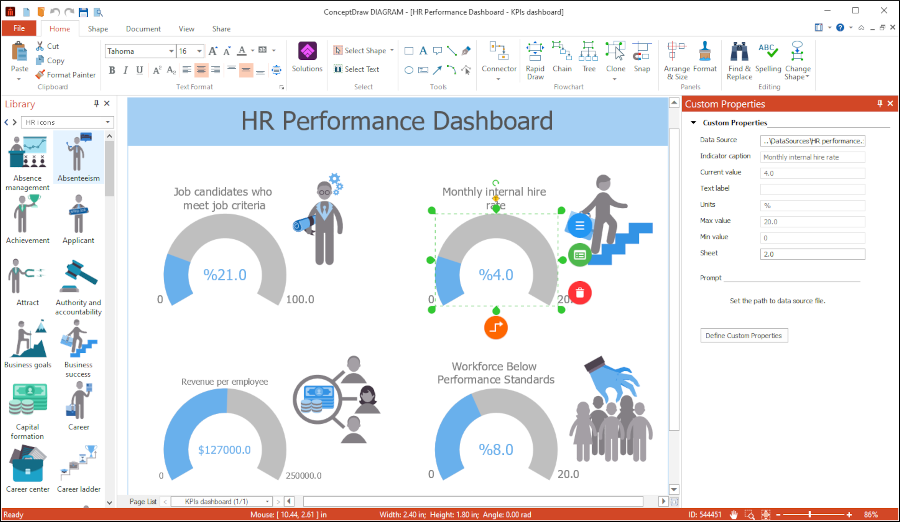
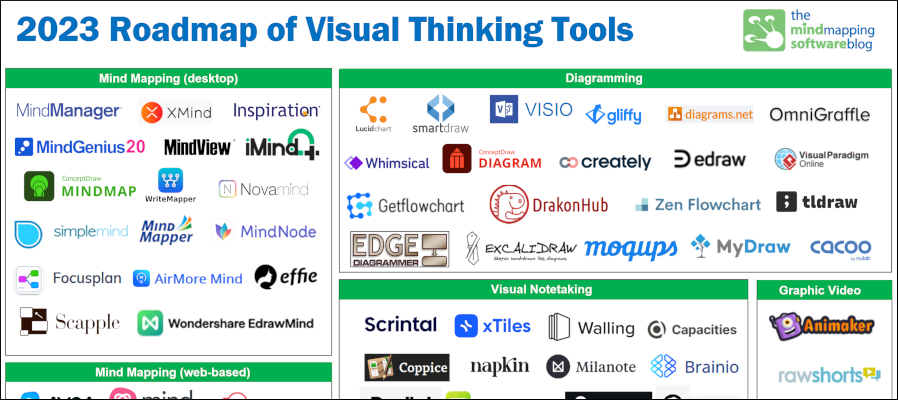
Leave a Reply